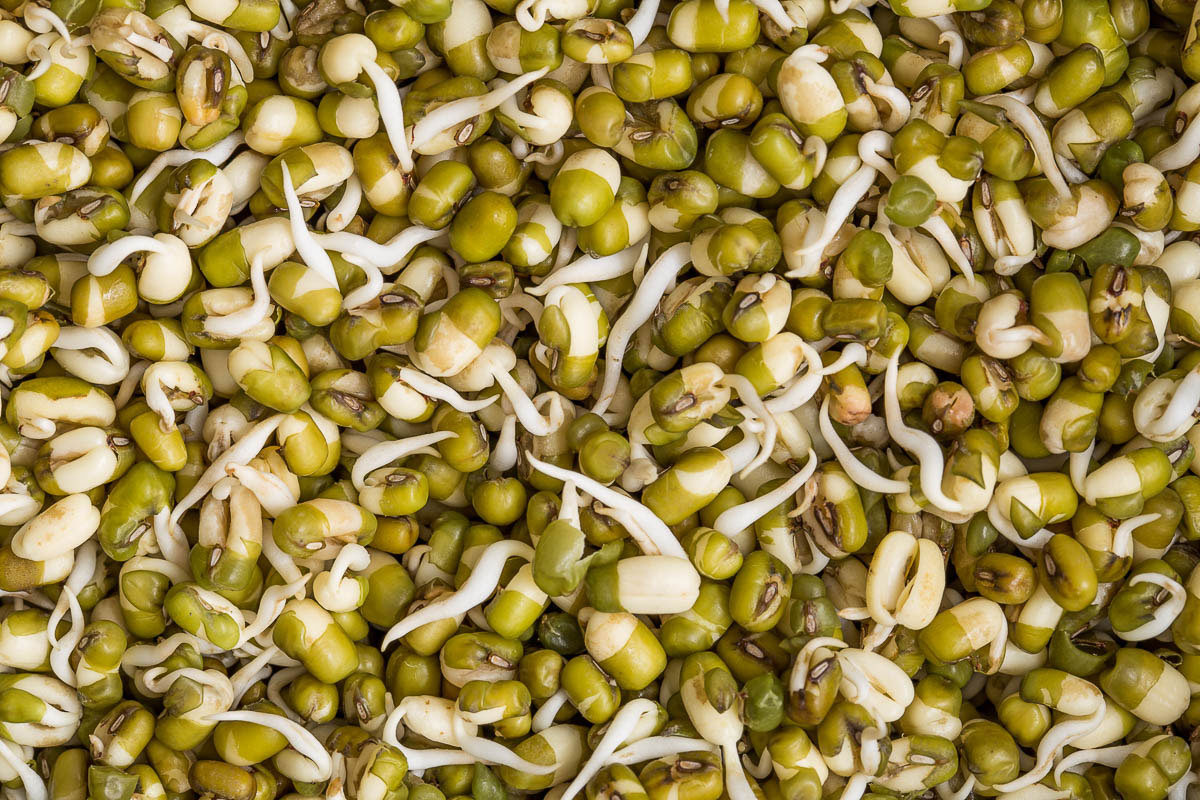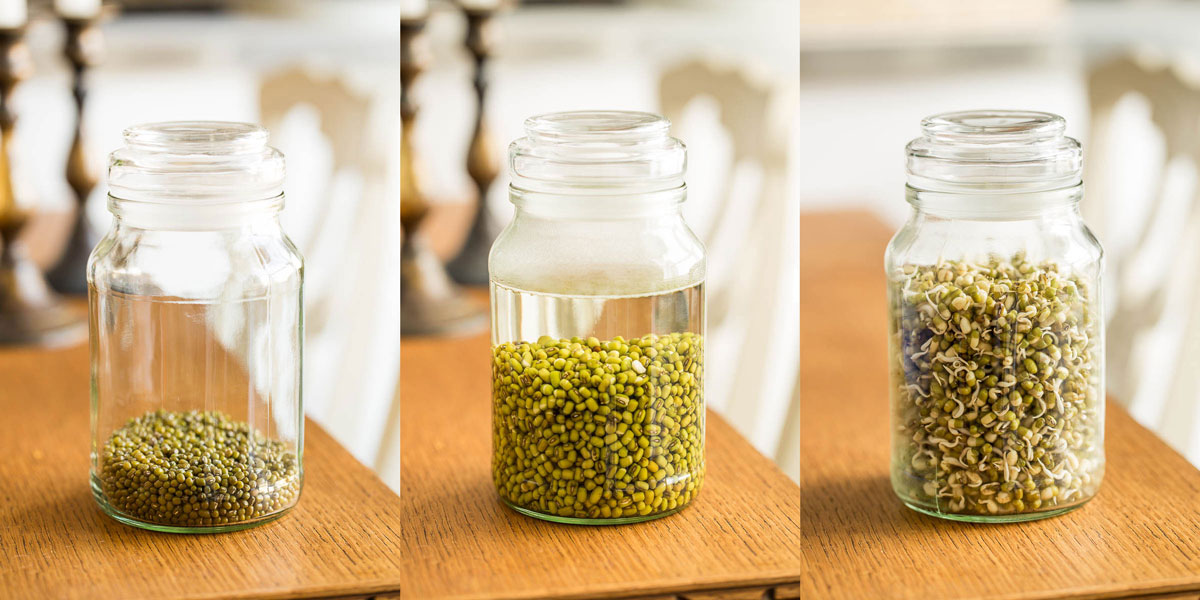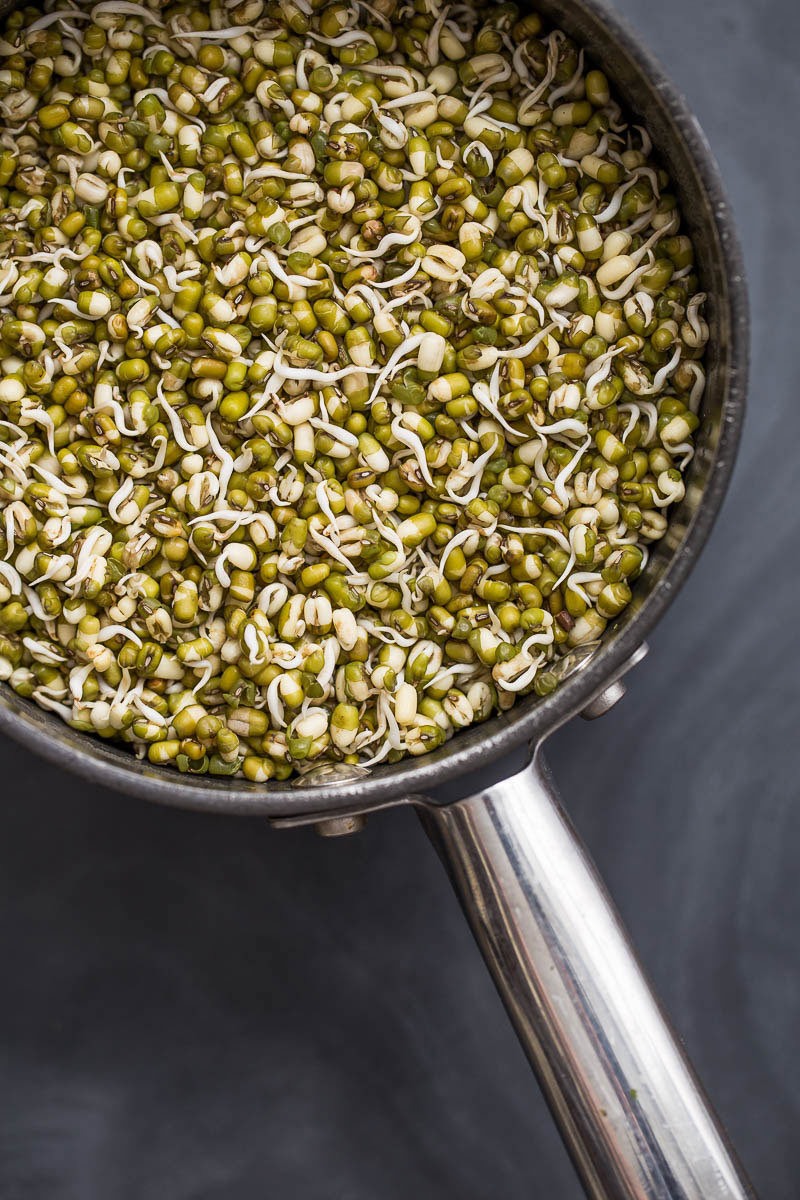Over the last month I’ve become infatuated with creating hearty, delicious salads for my lunches, based on delightful sprouted mung beans. Salads needs to be wholesome and filling, I have little truck for a bowl of leaves and a dressing, I want something substantial. They need are a good base, a nutritionally sturdy underpinning, hence my love of legumes as the base for my salads this summer. Once I knew how to sprout mung beans, I became a convert to them!

Leguminous Lunch.
I began the summer using tins of chickpeas, kidney or black eyed beans, yet quickly became tired of the tinned burden when shopping, not to mention the space they take up on my shelf. I needed something fresh, healthy and less tinned.
I’ve been using Mung beans for years in curries and occasional salads, since being introduced to them via some Indian recipes and an Ottolenghi carrot salad. I had rarely soaked them and never sprouted them, but remembered eating a sprouted mung beans salad at Little Cove earlier this year. After a quick google, I was preparing to sprout mung beans and make an Indian salad recipe, which featured these little delights.
A tiny amount of dried mung beans becomes a huge pot of sprouted beans, a large bag will last for an age, reducing the shopping burden, which is always welcome. There’s also something peculiarly exciting about watching these little beans grow as they soak, then grow again as they sprout, finally leaving wholesome and nutritious sprouts that are a solid foundation for any salad.

Nutritional Powerhouse.
Mung beans are serious power players of the bean world, containing plenty of protein and carbohydrate, as well as a very healthy spread of vitamins and minerals. Reading through the nutritional info makes them sound largely flawless, a highly nutrient dense addition to your diet. Mung beans have also been a cornerstone of the Indian Ayurvedic diet due to their wholesome properties, being used in Kitchari, a very simple Indian dish which is revered for it’s cleansing and healing properties.
Here’s the process behind making them, why not make a batch and keep them in the fridge, ready to chuck into your next salad.

How To Sprout Mung Beans
By Gavin Wren
Makes approx 500ml
Uses a pot, pan, dish or bowl.
Ingredients
125g mung beans
Directions
Leave to soak for 8-12 hours.
Drain and rinse the beans well.
Place back in a bowl, dish, saucepan or jar with plenty of space as they will increase in size considerably as they sprout. Cover them, but ensure air can get in and out, you could place a tea towel over the top, or use a lid, leaving a gap. Don’t use an airtight container.
Store in a dark place. If they are exposed to light during this process, they may sprout less and become bitter.
Every 12 hours, wash the beans by rinsing them well then draining. This is to prevent them spoiling or bacteria growing.
After 2 days you should have some nicely sprouted beans. You can sprout them for up to 5 days, by which point you will have fully grown beansprouts.
To use in a salad, simmer in boiling water for 6 minutes, then drain and cool. If you sprout for longer, you don’t need to cook them at all, they can be eaten raw.
The sprouted mung beans keep for at least 3 days in the fridge.

